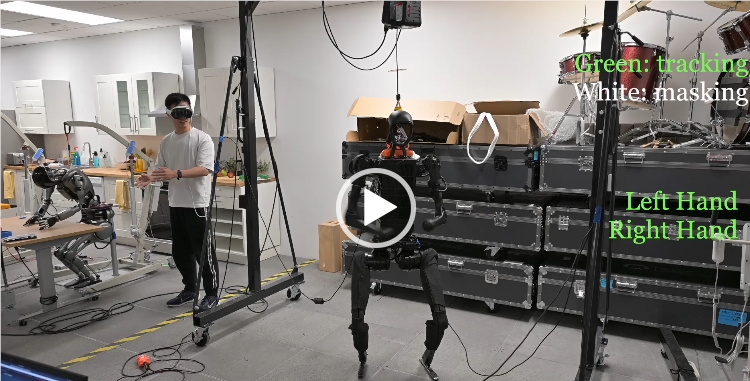The Nvidia research team recently announced its breakthrough progress in the field of robot control - neural network system HOVER. The system achieves efficient control of humanoid robots with extremely low parameters (only 1.5 million), and its performance even surpasses specially designed control systems, which is of milestone significance in the field of artificial intelligence. HOVER's outstanding performance comes from its clever system design and powerful adaptability. It can run smoothly in a variety of input modes and can migrate virtual training results directly to real robots, showing amazing efficiency and potential. .
Nvidia's research team recently made major breakthroughs in the field of robot control. The neural network system they developed HOVER realizes efficient control of humanoid robots with extremely streamlined parameters, and its performance even surpasses specially designed control systems.
This HOVER system, which only requires 1.5 million parameters, can handle complex robot motion control. In contrast, common large language models often require hundreds of billions of parameters. This amazing parameter efficiency demonstrates the exquisiteness of the system design.

HOVER's training is performed in Nvidia's Isaac simulation environment, which can accelerate the robot's movements by 10,000 times. Nvidia researcher Jim Fan revealed that this means that the amount of training in a virtual space for one year can be completed in just 50 minutes.
A highlight of the system is its excellent adaptability. It can be directly migrated from the simulated environment to the real robot without additional tuning, and supports a variety of input methods: head and hand movements can be tracked through XR devices such as Apple Vision Pro, and full-body position data can be obtained through motion capture or RGB cameras. , collect joint angles through exoskeletons, and can even be controlled using standard gamepads.
What is even more surprising is that HOVER performs better in each control mode than systems developed specifically for a single input mode. Lead author Tairan He speculated that this may stem from the system's deep understanding of physical concepts such as balance and precise limb control, allowing it to transfer knowledge between different control modes.
The system is based on the open source H2O & OmniH2O project development and can control any humanoid robot that can run in the Isaac simulator. Currently, Nvidia has disclosed samples and code on GitHub, bringing new possibilities to the field of robot research and development.
The open source of HOVER system will greatly promote the progress and application of robot control technology, and provide new directions and impetus for the future development of robot technology. It is worth looking forward to its wide application and further development in various fields.